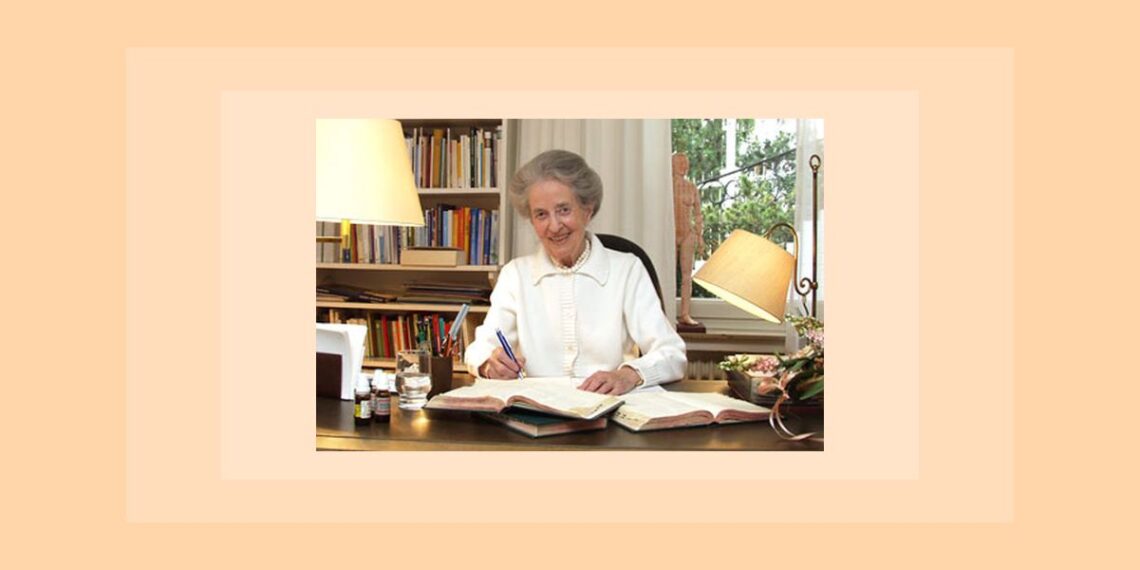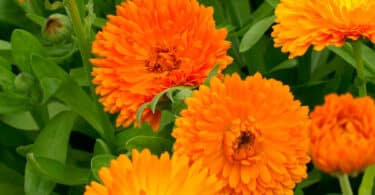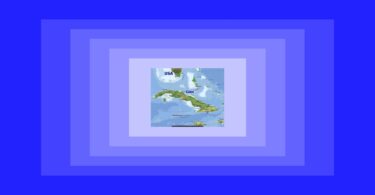The Carstens Foundation is the most important institution promoting complementary medicine in Europe.

Veronica Carstens was born in Bielefeld, Germany, on June 18th, 1923. She was the youngest of four children, and grew up in a Christian home with loving and tolerant parents. Veronica saw this time as a “period of great happiness”. She also enjoyed remembering her school time when she felt entirely supported. After passing her final secondary-school examinations (A-levels) she attended the obligatory labor service in the year of World War II, 1941, in Westrup (Westfalen), mainly helping in agriculture. Being a great music lover she actually wanted to study music. But for her parents a higher academic education that provided a woman independence was of much importance, and as she found herself too shy for the teaching profession she began studying medicine in 1942, at the Albert-Ludwigs-University in Freiburg/Breisgau.
After finishing the preliminary medical examination she interrupted her studies to work as a nurse in the hospital in Bielefeld, and in the military hospitals in Husum and Heide. The partly negative experiences and perceived cold-heartedness in the hospitals were formative for her further development. She did not want to become a White Goddess but a physician who’s most important concern is the patient himself.

Despite her deepest wish to have children, it turned out that the couple would remain childless. Missing a meaningful purpose in her life the upcoming depression and despair urged her to rearrange her life. Supported by her husband she resumed her medical studies in 1956, and graduated in 1960. Afterwards she qualified as an internist in the catholic hospital in Bonn. After working as an assistant in the hospital she opened her medical practice in 1968, in Meckenheim, near Bonn, being specialized in homeopathy and alternative medicine. Having finished her studies and worked in the hospitals she felt highly motivated for her “wonderful profession”. [1]
When her husband became the chairman of the parliamentary group CDU/CSU in 1973, she started reading political articles, not having been interested in politics before. In the 1960s she co-founded the Woman and Family Service which was to support women and their families whose relatives working for the office frequently had to change their location. In 1979 Karl Carstens became the president of Germany. Being supported by her husband, Veronica Carstens maintained her practice throughout his husband’s tenure as a president, although with reduced consultation hours and without accepting new patients, as she did not want them to take advantage of her relations.
During her time being the First Lady, Veronica Carstens became the patron of the German Association for Multiple Sclerosis, as she felt very sorry for the deep suffering of people ill with multiple sclerosis, and because she also felt plagued by orthodox medicine’s inability to help these patients. She also became the patron of the German UNICEF, the curatorship of the German Help for the Elderly, and the German Mothers’ Convalescence and Recuperation Scheme.

Having found her vocation in serving her patients, Veronica Carstens also emphasized using a humane medicine and naturopathic methods, and argued, that a physician should know both systems of medicine. Her vision was to bridge the gap between both medical systems – at a time when the gap between orthodox and alternative medicine seemed to be insurmountable. New technical advances added to the already introduced wonder drugs and promised an easy cure for all and everything. Moreover, in the modern era everything that couldn’t be scientifically validated was plainly rejected.
The experience of being helpless with the orthodox treatment of many chronic diseases and the encounter with a competent female homeopath, whose knowledge and capabilities inspired her, motivated her to attend homeopathy courses by herself. She soon learned that homeopathy offers a gentle and permanent approach for treating patients, and her principle became: “As much gentle medicine without side effects as possible, and orthodox medicine only if the results are unsatisfying.” [2]
Although being against absolutism, Veronica Carstens pointed out that orthodox medicine cannot persist in the long run due to their severe side effects. Contrary to that, naturopathic medicine not only reduces negative side effects but also increases the patient’s awareness for their own health and opens the way to an improved lifestyle. She was also aware that the greatest healing effect originates at the psychic level, and she had noticed that patients appreciate talking about psychosomatic issues. She had often witnessed that the conversation was sufficient to solve blockages, or that the proper homeopathic remedy was of great help.
Veronica Carstens was a self-confident yet humble woman. Karl Carstens admired his wife and her development into a woman with a strong personality who touched the hearts of so many people. In 1981 they established the Karl- and Veronica-Carstens Foundation, an organization to support scientific research studies to validate naturopathy and homeopathy. Their aim was to lay the foundation for the recognition of the effectivness of naturopathy and homeopathy, so that they would become integrated into research and university education, and finally into the hospitals by means of specially educated physicians. Their idea was borne out when they were both flying over the Himalayan on their way back from the Peking government. Veronica Carstens’ new experiences with Traditional Chinese medicine had made her enthusiastic about integrating alternative medicine into the established medical system.
The main tasks of the Carstens-Foundation are:
- Fundamental research with regard to the effectiveness of homeopathic remedies.
- Clinical studies to research effectiveness.
- Promoting young researchers and followers for a new generation of physicians.
- Documentation of research methods and homeopathy.
- Historical-philosophical research on homeopathy and its protagonists.
- The integration of homeopathy into the German medical system.
Due to the great interest of the population the foundation soon had a great many of members and study groups. The work of this organization largely contributed to the recognition of alternative medicine in Germany, the promotion of research and the integration of homeopathy into hospitals. Nowadays, the Carstens Foundation is the most important institution promoting complementary medicine in Europe.
When on a talk show, Veronica Carstens courageously and undeviatingly defended homeopathy against the criticism of the very tough opponent, professor Prokop. In a very calm manner she stood up for homeopathy so that he felt provoked and wanted to slap her. This night the Carstens-Foundation got more than 600 new members!
Some of the successes of the organization are the establishment of the naturopathic clinic at the gynecological University hospital in Heidelberg, the clinic for naturopathic medicine at the University in Freiburg and the oncological University in Jena, amongst others. Unique is the pilot project of homeopathy at the children hospital at the University in Munich. Its main aim is the integration of homeopathy into the children’s hospital and realization of scientific research. Acute as well as severe chronic diseases are treated with homeopathy. Core areas are neonatology, oncology and children’s surgery. Amongst many others, “Homeopathy in the hog house” was an interesting and successful project that proved the efficacy of homeopathic treatment of animals, thereby discounting the often attributed mere placebo effect. Homeopathic treatment reduced the incidence of cases of illness, and the birth rates increased. Antibiotics could be avoided, and finally, sales increased. [3]
In 1983 Karl and Veronica Carstens founded the developmental Association for the promotion of medical experience, “NATURE and MEDICINE e.V.”, to gain monetary funds from publicity, which soon counted more than 50.000 members. Their donations enabled funding research projects. So far they could facilitate more than 30 million Euro (value 2010) which is even more than provided by the Federal Ministry of Education and Research or the European Union.
The organizations for which Veronica Carstens worked and the people with whom she cooperated became her family and purpose in life, and a place where she felt at home, safe and warm. With a deep and selfless devotion she dedicated her life to the realization of her forward-looking idea. Many of the research studies had proven the utility and efficacy of homeopathy and other alternative methods and thereby paved the way for their integration into the established medical system. Pursuing her goal she tried untiringly to personally come in touch with other people. She had constantly been on lecture tours, and answered most incoming letters personally. She used her contacts to call the peoples attention to alternative medicine and to influence political decisions. Throughout her life she was open to everyone who was looking for her advice and helped others whenever possible. She had the great capability of listening genuinely, and showing true sympathy for other’s suffering. She was always open to new experiences and continually educated herself. She was a woman who could create hope among her patients and bolster them not to succumb to their destiny but to actively influence their lives. Her deep Christian faith was a source of power and confidence for herself as well as for many other people to move forward in their lives despite facing difficulties. She argued: “Where God sowed you there you have to blossom. You’ll grow with the challenges.”
Veronica Carstens was a deeply religious person. She worked in the parish council of the Evangeline church in Meckenheim to which she felt a deep connection. There she found the energy and stimulation for her life and work. Referring to Martin Buber’s quote she demonstrated his meaningful attitude with which she agreed: “If you want to grasp the depth and wideness of life, see life as a triangle: Me – You – and God. All essential things happen in these encounters.”
Karl and Veronica Carstens loved to hike through Germany – from the coast to the Alps – which compensated for the stresses that were involved in political life. Veronica Carstens often had lamented that the knowledge of many helpful household remedies got lost in the area of technique and she enjoyed meeting other people on their trips to discuss and share their knowledge about folk medicine. Wherever she was, she stimulated discussions about alternative medicine, as well as when being on state visits abroad with her husband.
Veronica Carstens was widowed in 1992. Although missi
After she had retired from public life in 2009, she lived in a sanitarium in Bonn. Veronica Carstens died on January 25th, 2012. She had always wished everybody could say at the end of their life. “it has been worthwhile”. [4]
Veronica Carstens had combined her profession of being a physician with her vocation to integrate homeopathy and other alternative medical methods into the medical system. Due to her efforts, complementary medicine, and homeopathy in particular were integrated into many medical practices and hospitals and opened the minds of many people in Germany. Nowadays, naturopathic treatment is integrated into the Medical Licensure Act, and even part of the education at German medical Universities. She was most happy that the younger generations were engaging more and more in alternative medicine, and that the valuable treasures of the past didn’t get lost. At the end of her life, the “grand lady of alternative medicine” and “gentle revolutionist”, as she is often called, contentedly said: “To witness how humans gradually wake up and discover and embrace the different great medical healing arts, of which I consider homeopathy to be the greatest, makes me happy. In doing this with the feeling of the necessity to be responsible for their own health is of utmost importance.”[5]
Veronica Carstens was a loveable, friendly and open yet somewhat reserved woman. She was reliable and trustworthy, and had a fine sense of humor. She has always been genuinely concerned about her patient’s well-being and convinced that every human being has her special purpose in life. With Samuel Hahnemann she shares having the reached age of 88 years. Both also had a deep faith into God which was a source of strength and inspiration throughout their lives. They both were good pupils who had been supported by teachers and friends, as well as later in their marriages. Finding their life purpose and serving their patients without causing them harm – by means of homeopathy – made their lives truly worthwhile.
References
Veronica Carstens Dein Ziel wird Dich finden, Natur & Medizin, e.V.
http://de.wikipedia.org/wiki/Veronica_Carstens
http://www.med-kolleg.de/veronica_carstens.html
http://www.aerzteblatt.de/archiv/121793/Veronica-Carstens-Engagement-ohne-Eitelkeit
http://www.informationen-zur-homoeopathie.de/?p=594
Footnotes
[1] p.70. Veronica Carstens Dein Ziel wird Dich finden, Natur & Medizin, e.V.
[2] p.78 Veronica Carstens Dein Ziel wird Dich finden, Natur & Medizin, e.V.
[3] p.93 Veronica Carstens Dein Ziel wird Dich finden, Natur & Medizin, e.V.
[4] P.177 Veronica Carstens Dein Ziel wird Dich finden, Natur & Medizin, e.V.
[5] P.177 Veronica Carstens Dein Ziel wird Dich finden, Natur & Medizin, e.V.
Picture credits
http://www.aerzteblatt.de/archiv/121793/Veronica-Carstens-Engagement-ohne-Eitelkeit
http://de.wikipedia.org/wiki/Veronica_Carstens
http://www.informationen-zur-homoeopathie.de/?p=594
http://www.baby-und-familie.de/Homoeopathie/Okoubaka–Homoeopathische-Hausapotheke-Teil-12-46984.html






A patient age near about 56 years suffering from diabetes mellifluous Type II . his blood report as under:-
fasting Blood sugar———–125
Blood Sugar PPB(2Hr)——-170
I given sum medicine 1. Acid Phos —- -Q 10 Drops TDS Each for 30 days
2. Gymnema S– -Q
3. Assenic Brom– -Q
4- syzigium J Q.
5. Urenium Nit 30
After 30 Days the sugar label come down —
Fasting Blood Sugar——————106
Blood Sugar PPBS -(2Hr)———–120.
I give Thanks to God and thank to Hpathy as well as MHM
Thank you Katja. This is a beautifully written article about Veronica Carstens, a most dedicated and extraordinary woman. The Carstens’ Foundation did so much to promote homeopathy and holistic medicine in Europe.
Thanks so much Katja for writing about this extraordinary woman. It has answered my questions as to why homeopathy has such fertile soil in Germany. As a Christian homeopathic student, it deeply touched me and encouraged me. A very inspiring article, I am sure God would have said to her at the end of her earthly life, “well done good and faithful servant”.